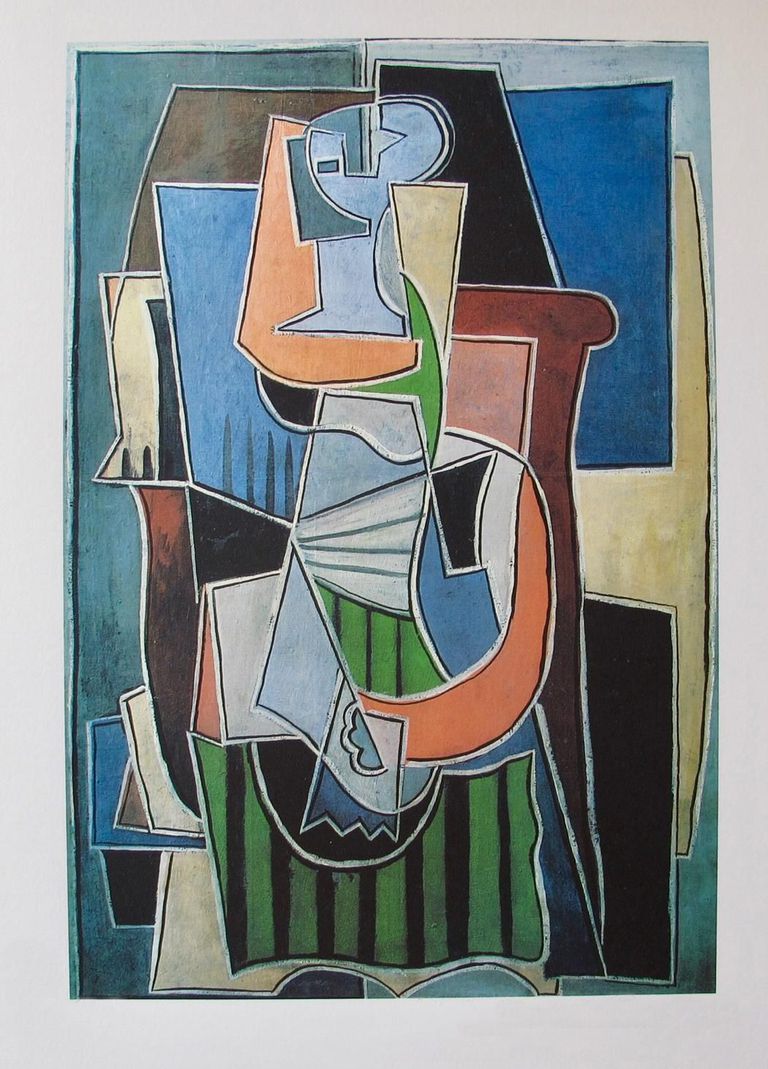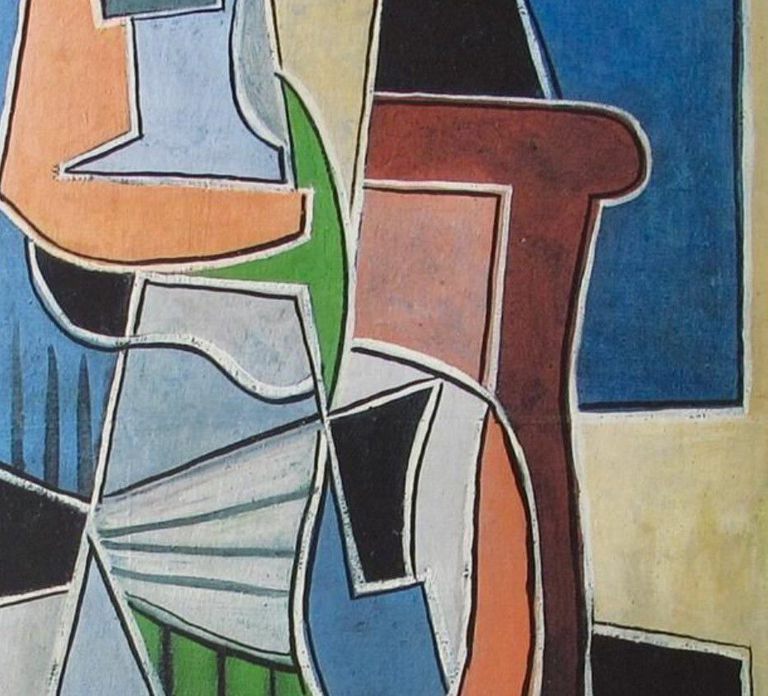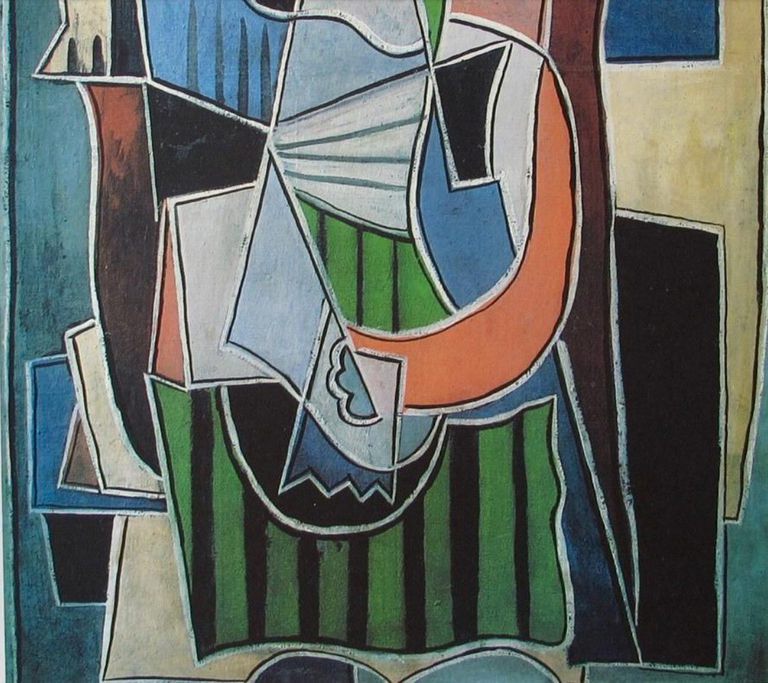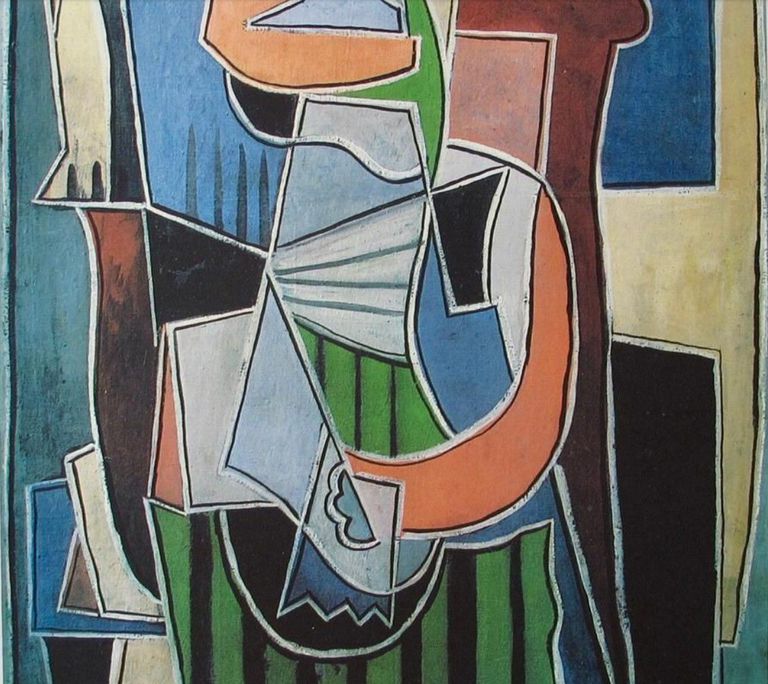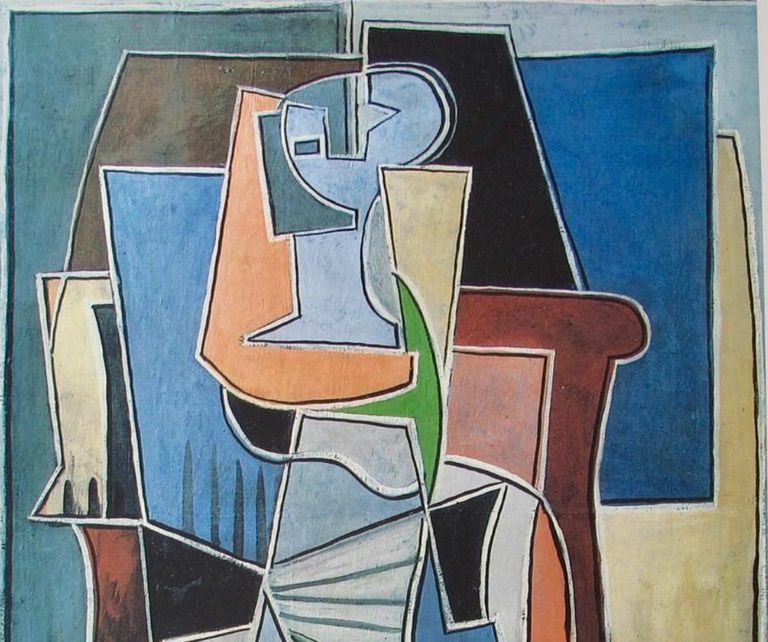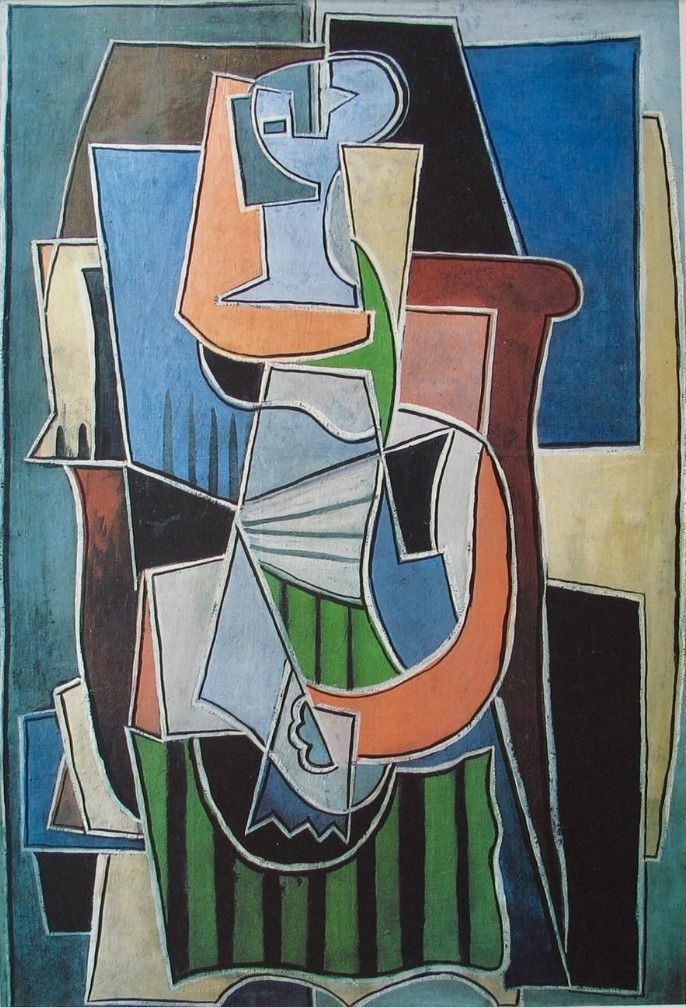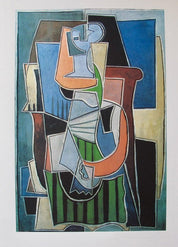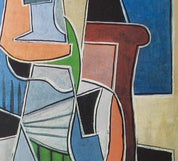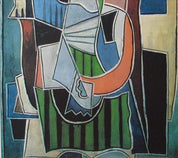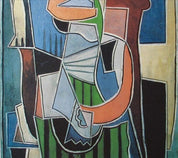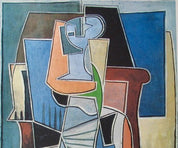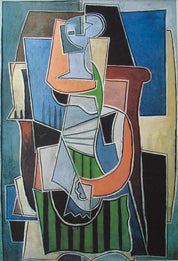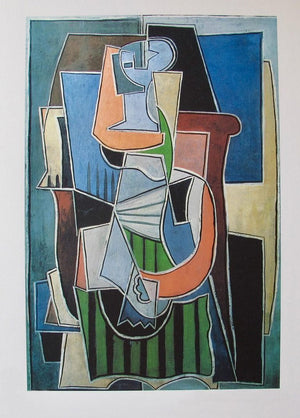Similar Items
Pablo Picasso, (After) 'Abstract'
Artwork - Pablo Picasso's (After) Abstract
Pablo Picasso, one of the most influential artists of the 20th century, has left an indelible mark on the art world, and this abstract composition, (After) Abstract, pays homage to his iconic style. This artwork embodies the hallmark elements of Picasso's celebrated visual language: geometric shapes, expressive strong lines, and flat brushwork. In this composition, these elements converge to create a harmonious yet dynamically engaging artwork.
Details:
Artist: Pablo Picasso (After)
Title: Abstract
Signature: Estate Signed
Medium: Giclee Print
Dimensions: Approximately 20 X 13 inches
Art State: Unframed
Edition: Numbered From An Edition Of 500
Paper Type: Thick Quality Archival Paper
Description:
"Abstract" is a striking testament to Picasso's ability to distill complex ideas and emotions into visual form. In this composition, he masterfully wields his artistic vocabulary to create a captivating interplay of shapes and colors. Geometric forms and expressive lines converge to generate a dynamic composition that draws the viewer into Picasso's unique visual universe.
Chromatically, Picasso employs a clever strategy to guide the viewer's eye. He places cooler hues at the margins of the piece, directing attention toward the warm-hued contrast at the center. This clever use of color not only creates visual intrigue but also underscores Picasso's command over the language of art.
About the artist - Pablo Picasso:
Pablo Picasso, born in Málaga, Spain, on October 25, 1881, and later a French citizen until his passing on April 8, 1973, was a multifaceted artistic genius. Trained by his father, a professor of drawing, Picasso exhibited his first works at the astonishingly young age of 13. His artistic journey took him to Paris in 1904, where he transitioned from his predominantly blue-toned Blue Period (1901–04) to the warmer hues of his Rose Period (1904–06).
Picasso's artistic evolution reached a crescendo with "Les Demoiselles d’Avignon" (1907), a masterpiece that was controversial for its bold treatment of the female form and the masklike faces influenced by his study of African art.
The years from 1909 to 1912 marked a pivotal phase in Picasso's career when he collaborated closely with Georges Braque, resulting in the birth of Cubism. Their groundbreaking approach to art defied Renaissance traditions, particularly the use of perspective and illusion. Picasso and Braque paved the way for a new reality in art.
Throughout his life, Picasso continued to evolve and experiment. His works spanned various mediums, including sculpture, ceramics, lithography, and stage design. His art was deeply influenced by the Spanish Civil War, culminating in the monumental "Guernica" (1937), which condemned the horrors of war.
Picasso's legacy endures through his prodigious artistic output, which significantly contributed to the development of modern art in the 20th century. His influence on the art world and his ability to continually reinvent himself make him an enduring and revered figure in art history.
Popular Items
































